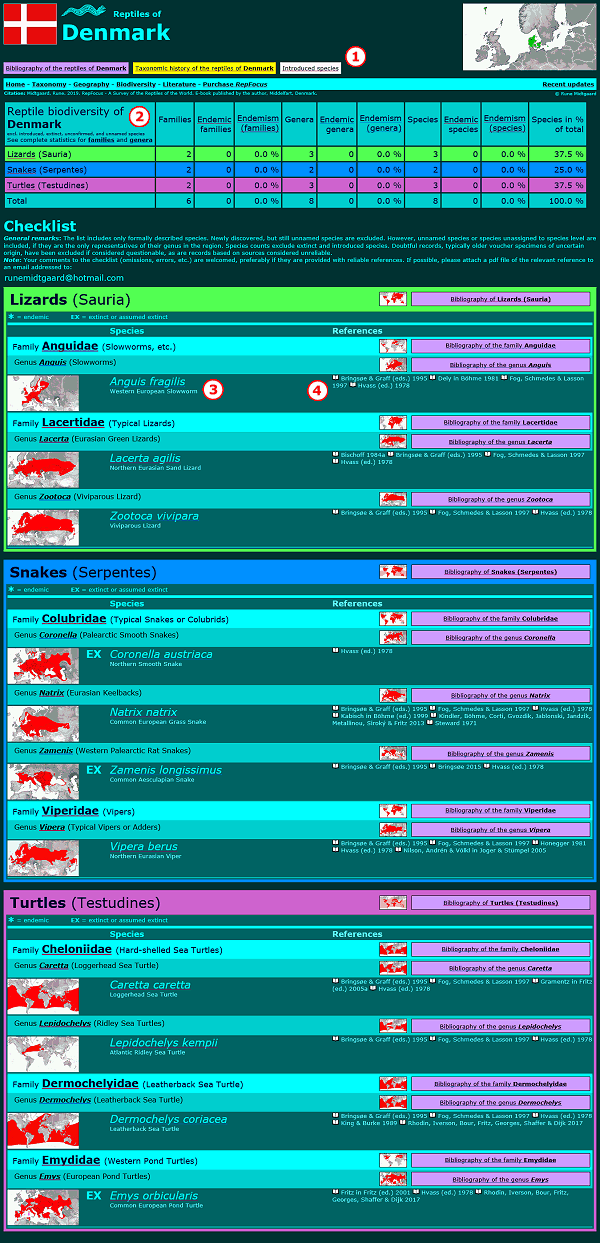
|
The
Geography
section includes checklists for each of the world's countries and a number of other regions.
Each checklist includes some statistics on the reptile biodiversity of the country.
All checklists are based entirely on published literature. These references are also included in the list, indexed according to each species.
If a reference records a species from the border between two nations/provinces, it is included for both regions.
About 250 country checklists are currently available, but more lists are in preparation.
It is the intention eventually to make checklists available also for states, provinces, and islands of nations such as Australia, Brazil, Canada, China, India, Indonesia, Mexico, Philippines, South Africa, and USA.
- Top menu:
Includes three links: bibliography, taxonomic history, and checklist of introduced species.
Only the bibliographies and checklists of introduced species are currently included.
The taxonomic histories are in preparation for the 2nd edition of RepFocus.
- Reptile biodiversity:
Lists the numbers of families, genera, species, endemic species, the degrees of endemism, and relative species percentages of each of the main groups of reptiles,
as well as in total.
There is also links to the regional family and genus biodiversity.
- Species:
Lists the native species reported from the country or region. Subspecies are not included.
Each family and genus/species is linked to its respective taxonomic page.
Species marked with an asterisk (*) are endemic to the country or region.
Species marked with "EX" are extinct or believed to be extinct in the country or region.
Introduced or extinct species are not included in the statistical counts.
- References:
Lists the references on which the inclusion in the checklist of the species is based.
The list is not comprehensive, but focuses on the most relevant references, often the most recent regional checklists, handbooks, field guides, taxonomic monographs,
reviews, etc.
Priority has been given to voucher-based sources and to recent, rather than older, publications, and a sincere effort has been made to eliminate contradictions between sources, based on outdated or erroneous information.
Due to their often elusive nature, website sources have only been included in selected cases where similar information is not readily found in published literature.
A reference followed by a species name in brackets indicates that the species was recorded in the reference under the name mentioned in brackets.
Example: Hutton & David (2008) reported Dendrelaphis pictus from Kerala, India.
These populations have subsequently been described as a new species, D. ashoki.
This citation is therefore registered under D. ashoki as "Hutton & David 2008 [as pictus]".
|








